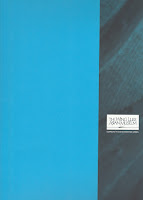Long ago, when I first really started getting into the idea of working in a museum, there was a post on LinkedIn asking for recommendations for good books about exhibits. One of the books listed was Community-Based Exhibition Model from the Wing Luke Museum in Seattle, so I put it on my list of books to read someday (although I couldn't find it for sale anywhere).
This past September, I attended the American Association of State and Local History's virtual conference, which had a number of staff members from the Wing Luke Museum presenting sessions. In their sessions, Cassie Chinn and Rahul Gupta each touched on the idea of partnerships with the community, and in other sessions, both from presenters and attendees, the Wing Luke's community-based model -- the book, and the general idea -- were mentioned. That made me want the book even more.
In October, Jessica Rubenacker, current exhibits designer at the Wing Luke, spoke to one of my Museum Studies classes; I LOVED listening to her, which made me decide I Need This Book Now. I was finally able to find it for sale on the museum's website (why didn't I ever look there before??).
In this short book (26 big-sized pages, with charts and images), Cassie Chinn describes the museum's process for creating their community-based exhibits, where museum staff let community members guide the development of exhibits -- including themes, education and public programs, sources for artifacts and interviews, and even fundraising -- and uses the 2005 "Sikh Community: Over 100 Years in the Pacific Northwest" exhibit as a case study for their approach.
The upsides:
- The chart of the community-based model, showing how the Community Advisory Committee, participating community members, museum staff, and contractors all relate to each other and work together.
- How to select Advisory Committee members and community partnerships
- The meeting schedule - Chinn lays out what topics are covered at each of their (sample) meetings (Meeting 1 is introductions, sharing project background, presenting a timeline; Meeting 4 is creating the exhibit's storyline; etc.)
- How to facilitate a meeting with the Advisory Committee, a lot of which are just good points for leading any kind of meeting (making sure everyone's voice is heard, sending meeting minutes, respecting people's time, etc.)
- The Sikh exhibit case study shows in more detail how the theoretical model and timelines presented earlier in the book play out for real
- The honesty about what worked and what got the Sikh exhibit project off schedule
- The honesty about challenges presented overall by this model
- In the AASLH sessions as well as sessions of the New England Museum Association's virtual conference on working with the community and partners, over and over panelists talked about being flexible, giving up control, and admitting that you don't know everything, and these key points are also highlighted in this book.
The downsides:
- I would have liked maybe one more case study. The Sikh exhibit study gives good insight, but a second example could have possibly presented even more highlights and lowlights (things that worked and things that didn't) that the reader could learn from, and could also show how the museum learned from the challenges of the Sikh (or a previous) exhibit. Then again, this book was written soon after the Sikh exhibit was completed, so perhaps if they had an updated version, there would be more projects available to use as case studies.
Overall: A good tutorial for people who want to create exhibits with their community. The Wing Luke obviously has a great connection with their community and partners (otherwise they wouldn't want to help the museum with their exhibits), and Chinn does a nice job of presenting the framework for a community-based project.
 |
| Community-Based Exhibition Model by Cassie Chinn |